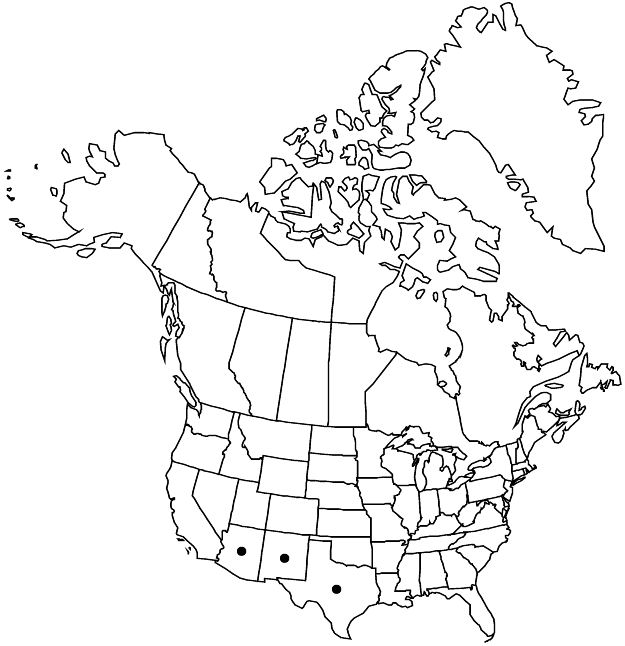Difference between revisions of "Rosa stellata"
Bull. Torrey Bot. Club 25: 152, plate 335. 1898.
imported>Volume Importer |
RevisionBot (talk | contribs) m (Bot: Adding category Revised Since Print) |
||
| (2 intermediate revisions by 2 users not shown) | |||
| Line 77: | Line 77: | ||
|publication year=1898 | |publication year=1898 | ||
|special status=Endemic;Illustrated | |special status=Endemic;Illustrated | ||
| − | |source xml=https:// | + | |source xml=https://bitbucket.org/aafc-mbb/fna-data-curation/src/2e0870ddd59836b60bcf96646a41e87ea5a5943a/coarse_grained_fna_xml/V9/V9_116.xml |
|subfamily=Rosaceae subfam. Rosoideae | |subfamily=Rosaceae subfam. Rosoideae | ||
|tribe=Rosaceae tribe Roseae | |tribe=Rosaceae tribe Roseae | ||
| Line 86: | Line 86: | ||
}}<!-- | }}<!-- | ||
| − | -->[[Category:Treatment]][[Category:Rosa sect. Minutifoliae]] | + | --> |
| + | |||
| + | [[Category:Treatment]] | ||
| + | [[Category:Rosa sect. Minutifoliae]] | ||
| + | [[Category:Revised Since Print]] | ||
Latest revision as of 18:07, 6 November 2020
Shrubs forming dense, low thickets. Stems erect, rarely arching, 2.5–8(–15) dm; distal branches densely pubescent, usually with, rarely without, stellate hairs, rarely glabrous, sometimes densely or sparsely sessile- or stipitate-glandular; infrastipular prickles paired or single, erect, rarely curved, 10–13 × 2.5–6 mm, sometimes with shorter internodal prickles and aciculi 0.5–5 mm. Leaves 2–3 cm; stipules 4–8 × 1–2 mm, margins ± entire, surfaces glabrous or tomentulose, sessile- or stipitate-glandular, sometimes eglandular; auricles obtuse, 2–3 × 1.5–2 mm, surfaces tomentulose, eglandular or glandular; petiole and rachis glabrous or pubescent, sparsely sessile- and stipitate-glandular, aciculi sparse, with or without glands; leaflets 3–5, terminal: petiolule 0.5–2 mm, blade obovate or deltate, 8–18 × 5–13 mm, margins broadly 1- or, rarely, multi-crenate, sometimes 1-serrate, glandular, teeth 3–8 per side on distal 1/2–2/3 of blades, apex acute or rounded, abaxial surfaces pubescent or tomentulose, rarely glabrous, eglandular, adaxial dull to lustrous, glabrous or tomentulose. Inflorescences 1(or 2)-flowered. Pedicels 2–16 mm, setae absent or dense or few, to 3 mm, pubescent, rarely glabrous, eglandular or stipitate- or sessile-glandular; bracts 0. Flowers 4–5 cm diam.; hypanthium cupulate, 2–5 × 3.5–6(–8) mm, puberulent or glabrous, setae subulate, 1–6 mm, eglandular, rarely glandular; sepals erect, 12–20 × 4–5 mm, tip 3–5 × 1–2 mm, lobes lanceolate, margins glandular, abaxial surfaces glabrous, basally setose, glandular; petals pink or dark pink, with strong almond fragrance, 15–25 × 14–25 mm; stamens 175; carpels 60–110, styles exsert 1–2.5 mm beyond stylar orifice (4–5 mm diam.), rims 1 mm wide. Hips dull red (darkening with age), broadly subglobose or cupulate, 7–13(–18) × (7–)9–16(–18) mm, setae to 4 mm, puberulent or glabrous, stipitate-glandular. Achenes 10–15, dark, ± terete-elongate, 3.5–4.5 × 2 mm.
Distribution

Ariz., N.Mex., Tex.
Discussion
Subspecies 3 (3 in the flora).
Selected References
None.
Lower Taxa
Key
| 1 | Leaflets (3–)5; distal branches usually glabrous, rarely with stellate hairs (usually stipitate-glandular); petioles and rachises glabrous or puberulent; se New Mexico, w Texas. | Rosa stellata subsp. mirifica |
| 1 | Leaflets 3; distal branches tomentose-woolly, with stellate hairs; petioles and rachises pubescent or puberulent, sometimes glabrous; nw Arizona, sc New Mexico | > 2 |
| 2 | Hypanthia: setae 1–3 mm; terminal leaflets abaxially tomentulose on midveins, otherwise glabrous; sc New Mexico. | Rosa stellata subsp. stellata |
| 2 | Hypanthia: setae 4–6 mm; terminal leaflets abaxially tomentulose or glabrous; nw Arizona. | Rosa stellata subsp. abyssa |